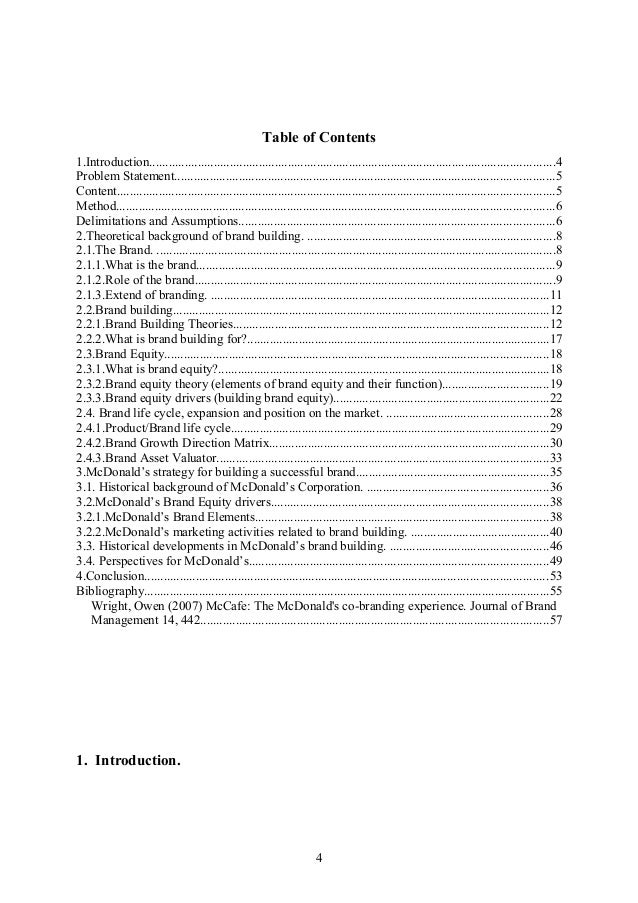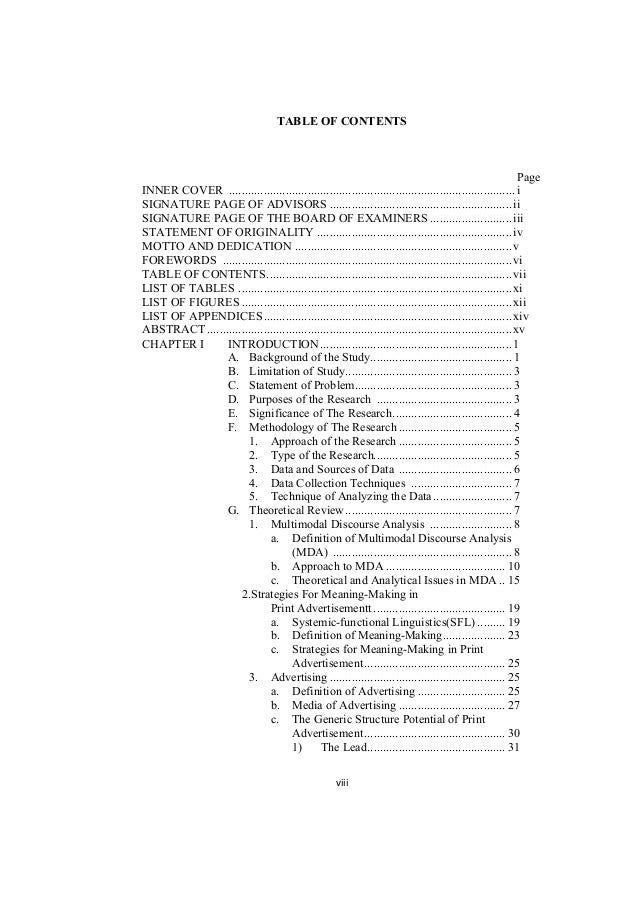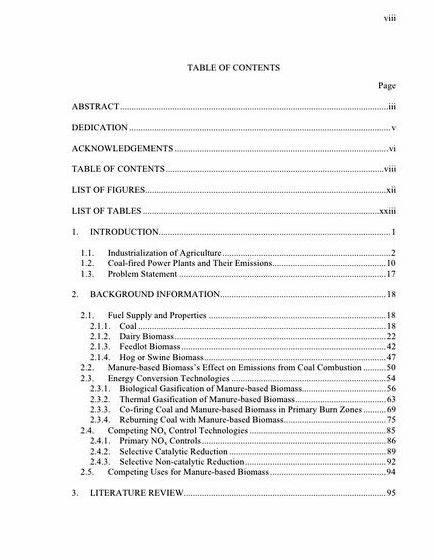
Things to Consider When Making APA Style Table of Contents
The table of contents (often titled just Contents) is the first page on which the page number appears (v, vii or ix – depending on whether there is a dedication/epigraph). The table of contents should contain the title and beginning page number of everything that follows it: acknowledgements, book parts, chapters, sections, list of references, etc · Generating Dissertation Table of Contents First, to generate the Table of Contents, start by entering a blank page after the pages you need the table of contents to follow. To do so, click on the bottom of the page you want before the Table of Contents. Open the ‘Insert’ tab and select ‘Page Break’.Estimated Reading Time: 9 mins · The usual dissertation chapters will be: Introduction with Aims and Objectives Literature Review Research Methodology Presentation of Case Study or Results (Stated facts without analysis or discussion) Analysis /Comparison of results Discussion – Critical Evaluation Conclusion, Limitations, Recommendations, Further Work

Title page
The table of contents (often titled just Contents) is the first page on which the page number appears (v, vii or ix – depending on whether there is a dedication/epigraph). The table of contents should contain the title and beginning page number of everything that follows it: acknowledgements, book parts, chapters, sections, list of references, etc · The usual dissertation chapters will be: Introduction with Aims and Objectives Literature Review Research Methodology Presentation of Case Study or Results (Stated facts without analysis or discussion) Analysis /Comparison of results Discussion – Critical Evaluation Conclusion, Limitations, Recommendations, Further Work The structure of a dissertation depends on your field, but it is usually divided into at least four or five chapters (including an introduction and conclusion chapter). The most common dissertation structure in the sciences and social sciences includes: An introduction to your topic; A literature review that surveys relevant sources

Formatting Requirements
· The usual dissertation chapters will be: Introduction with Aims and Objectives Literature Review Research Methodology Presentation of Case Study or Results (Stated facts without analysis or discussion) Analysis /Comparison of results Discussion – Critical Evaluation Conclusion, Limitations, Recommendations, Further Work The structure of a dissertation depends on your field, but it is usually divided into at least four or five chapters (including an introduction and conclusion chapter). The most common dissertation structure in the sciences and social sciences includes: An introduction to your topic; A literature review that surveys relevant sources This is the order of components for a thesis or dissertation: 1. Title page 2. Committee Page 3. Abstract 4. Lay Summary 5. Preface 6. Table of contents 7. List of tables 8. List of figures 9. List of illustrations Lists of symbols, abbreviations or other Glossary Acknowledgements Dedication Introduction Research chapters Conclusion 17

What to include in your table of contents
The table of contents (often titled just Contents) is the first page on which the page number appears (v, vii or ix – depending on whether there is a dedication/epigraph). The table of contents should contain the title and beginning page number of everything that follows it: acknowledgements, book parts, chapters, sections, list of references, etc The structure of a dissertation depends on your field, but it is usually divided into at least four or five chapters (including an introduction and conclusion chapter). The most common dissertation structure in the sciences and social sciences includes: An introduction to your topic; A literature review that surveys relevant sources · The usual dissertation chapters will be: Introduction with Aims and Objectives Literature Review Research Methodology Presentation of Case Study or Results (Stated facts without analysis or discussion) Analysis /Comparison of results Discussion – Critical Evaluation Conclusion, Limitations, Recommendations, Further Work
Instructions for Embedding Fonts
The table of contents (often titled just Contents) is the first page on which the page number appears (v, vii or ix – depending on whether there is a dedication/epigraph). The table of contents should contain the title and beginning page number of everything that follows it: acknowledgements, book parts, chapters, sections, list of references, etc This is the order of components for a thesis or dissertation: 1. Title page 2. Committee Page 3. Abstract 4. Lay Summary 5. Preface 6. Table of contents 7. List of tables 8. List of figures 9. List of illustrations Lists of symbols, abbreviations or other Glossary Acknowledgements Dedication Introduction Research chapters Conclusion 17 The structure of a dissertation depends on your field, but it is usually divided into at least four or five chapters (including an introduction and conclusion chapter). The most common dissertation structure in the sciences and social sciences includes: An introduction to your topic; A literature review that surveys relevant sources
No comments:
Post a Comment